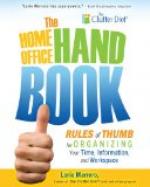Let me cite as another illustration the violent ways in which popular discontent may find expression in communities whose political capacity and general respect for the law and its officers, as well as for the sanctity of contracts, have never been questioned. Large tracts of land were formerly held along the Hudson river in the State of New York, by a few families, of which the Van Rensselaers and the Livingstons were the chief, either under grants from the Dutch at the first settlement of the colony, or from the English Crown after the conquest. That known as the “Manor of Rensselaerwick,” held by the Van Rensselaers, comprised a tract of country extending twenty-four miles north and south, and forty-eight miles east and west, lying on each side of the Hudson river. It was held by the tenants for perpetual leases. The rents were, on the Van Rensselaer estate, fourteen bushels of wheat for each hundred acres, and four fat hens, and one day’s service with a carriage and horses, to each farm of one hundred and sixty acres. Besides this, there was a fine on alienation amounting to about half a year’s rent. The Livingston estates were let in much the same way.
In 1839, Stephen Van Rensselaer, the proprietor, or “Patroon” as he was called, died, with $400,000 due to him as arrears from the tenants, for which, being a man of easy temper, he had forborne to press them. But he left the amount in trust by his will for the payment of his debts, and his heirs proceeded to collect it, and persisted in the attempt during the ensuing seven years. What then happened I shall describe in the words of Mr. John Bigelow. Mr. Tilden was a member of the State Legislature in 1846, and was appointed Chairman of a Committee to investigate the rent troubles, and make the report which furnished the basis for the legislation by which they were subsequently settled. Mr. Bigelow, who has edited Mr. Tilden’s Public Writings and Speeches, prefaces the report with the following explanatory note:—




